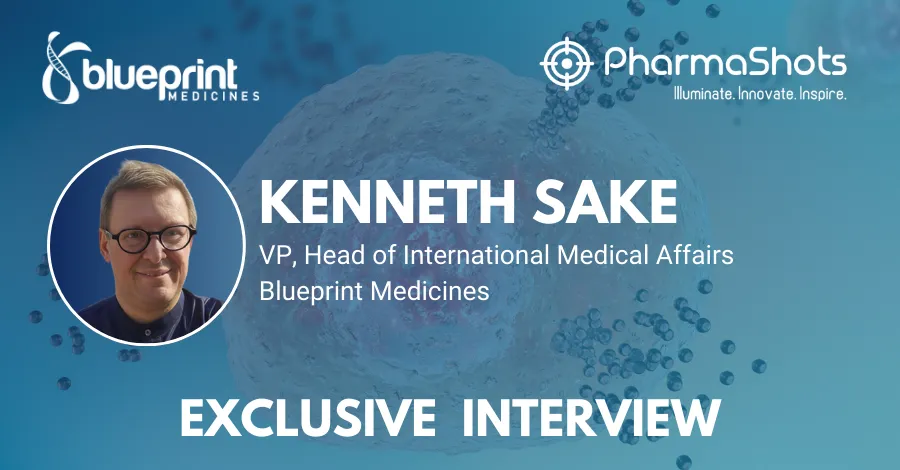
Exclusive Interview with PharmaShots: John Meduri of Accelerate Diagnostics Shares Insight on Antimicrobial Resistance or AMR
In an interview with PharmaShots, John Meduri, Chief Strategy Officer at Accelerate Diagnostics shared his views on antimicrobial resistance and discuss the epidemiology of AMR cases in the US and worldwide. He also shared his views on Accelerate Pheno system and PhenoTest BC kit.
Shots:
- Antibiotic resistance occurs when bacteria develop the ability to defeat the drugs designed to kill them
- The Accelerate Pheno system and Accelerate PhenoTest BC kit is the first FDA-cleared, fully automated, phenotypic solution to rapidly identify and test antibiotic susceptibility of pathogens directly from positive blood culture samples
- The company is planning to launch Accelerate Arc module which enables mass spectrometry, matrix-assisted laser desorption/ionization-time of flight, or MALDI-TOF for the rapid and accurate identification of bacteria in the lab
Tuba: Thanks for taking the time to talk to us. Can we first talk about what Antimicrobial Resistance (AMR) is?
John Meduri: Antibiotic resistance occurs when bacteria develop the ability to defeat the drugs designed to kill them. As a result, the medicines become ineffective and infections persist in the body, increasing the risk of significant morbidity and mortality to the patient as well as the potential spread to others. Without effective antibiotics, medical procedures such as organ transplantation, cancer chemotherapy, chronic disease management, and major surgery become very high risk and, in most cases, antibiotic-resistant infections require extended hospital stays, additional follow-up doctor visits, and costly and toxic treatments.
As you can imagine, for hospitals that are overburdened with the current COVID and Omicron surge and where their ICUs are at capacity, extending stays for patients is a significant problem – not to mention the additional follow-up visits that create an additional strain for physicians.
Hospitals are also facing the added challenge that outbreaks of new strains of antibiotic-resistant bacteria, or ‘superbugs’, are highly transmissible and cause invasive infections – adding a further risk for patients with an already weakened immune system. Just in July 2021, there was a new strain of Candida Auris fungus in hospitals in Texas and Washington DC, which is resistant to multiple antifungal drugs. (Source: Healthline, July 16, 2021)
Tuba: Can you please explain to our readers what HHS data means and how it helps understand the Antimicrobial Resistance problem?
John Meduri: The US Department of Health and Human Services (HHS) created The National Action Plan for Combating Antibiotic-Resistant Bacteria (CARB), which among other things, expands on evidence-based activities that have already been shown to reduce antibiotic resistance, and focuses on collecting and using data to better understand where resistance is occurring and supports the development of new diagnostics and treatment of treatment options. (Source: ASPE.HHS.Gov)
Tuba: Can you share the Epidemiology/ statistics of AMR cases in the US and globally?
John Meduri: Each year in the U.S., at least 2.8 million people are infected with antibiotic-resistant bacteria and at least 35,000 people die as a result, according to the CDC. Antibiotic resistance adds $20 billion in excess direct health care costs for the U.S., with additional costs to society for lost productivity as high as $35 billion a year.
As well, a recent Lancet publication highlights that drug-resistant bacteria killed almost 1.3 million people globally in 2019—more than either HIV or malaria. Unfortunately, the world’s poorest are the most disproportionately affected. (Source: Worldbank brief, May 13, 2021)
Tuba: Which antibiotics are more commonly used and can lead to AMR than others? (Provide data)
John Meduri: The antibiotics that are most used and prone to AMR are associated with the most common bacterial infections, such as urinary tract infections, lower respiratory tract infections, bacteremia, sexually transmitted infections, and wound infections. We’ve seen high rates of resistance against antibiotics used to treat these infections, indicating that we’re running out of effective antibiotics.
For example, the rate of resistance to ciprofloxacin, an antibiotic commonly used to treat urinary tract infections, varied from 8.4% to 92.9% for Escherichia coli and from 4.1% to 79.4% for Klebsiella pneumonia in countries reporting to the Global Antimicrobial Resistance and Use Surveillance System (GLASS). (Source: WHO Antimicrobial resistance, 17 November 2021)
Tuba: Why does it take 48 hours or more to identify bacteria or other micro-organisms?
John Meduri: Physicians typically initiate empiric therapy without specific information on the level of antibiotic resistance for that patient. With that, physicians often choose broad-spectrum antibiotics to cover the gamut of potential etiologies; often two or more antibiotics. This practice, in and of itself, actually leads to broader community AMR. After two or more days, the physician can optimize this treatment with definitive results from conventional microbiology diagnostic testing. The only way to know which therapy will work is to test a range of antibiotics. Typical, conventional antibiotic susceptibility testing requires time-consuming manual procedures, resulting in laboratory processing time that often exceeds 48 hours, leaving clinicians with incomplete information to provide definitive treatment during this critical time period or what I like to call this diagnostic window of uncertainty.
Tuba: Are there any novel technologies available that can expedite these critical results?
John Meduri: Yes - the Accelerate Pheno system and Accelerate PhenoTest® BC kit is the first FDA-cleared, fully automated, phenotypic solution to rapidly identify and test antibiotic susceptibility of pathogens directly from positive blood culture samples. The blood culture kit is indicated for the identification and susceptibility testing of specific pathogenic bacteria commonly associated with bacteremia, the leading cause of sepsis.
The Pheno test allows laboratories to substantially reduce the processing time required to know which antibiotic treatment will work, which enables clinicians to provide patients optimal, life-saving therapy up to 1-2 days faster than conventional methods.
For patients with bloodstream infections, a common cause of sepsis, we provide comprehensive minimum inhibitory concentration (MIC)-based antibiotic susceptibility results in about 7 hours. Current methods take 2 days or more to identify and determine which antibiotic would work best. We cut the time clinicians wait for results by 75% or more, enabling escalation or de-escalation of antibiotic therapy the same day—with only 2–3 minutes of hands-on time by removing the manual, time-consuming steps associated with conventional AST methods freeing up technologists limited time.
For patients and hospitals, that means there is a 1–2-day reduction in hospital length of stay, and an estimated $6,000 in hospital savings.
Tuba: What is the regulatory status of the PhenoTest BC kit in the US & globally?
John Meduri: The PhenoTest BC kit and Pheno System are FDA-Cleared in the US, while in Europe the PhenoTest BC kit is CE marked and available. Globally, we’re currently pursuing additional registrations.
Tuba: Would you like to discuss studies that prove the efficacy and susceptibility toward identifying microorganisms?
John Meduri: Yes. To date, we have over 75 peer-reviewed publications highlighting the medico-economic impact that our Pheno System delivers to global healthcare facilities. Two significant ones that come to mind are from The Mayo Clinic / UCLA, and a multicenter study with Cedars-Sinai, among others.
The Mayo Clinic / UCLA study was a randomized trial evaluating the clinical impact of RAPid IDentification and Susceptibility testing for Gram-Negative bacteremia, or RAPID GN test. Gram-negative bacteria cause the infections I’d mentioned earlier – Klebsiella, Acinetobacter, and E. coli. Based on the results of the study, The Mayo Clinic adopted and implemented the Accelerate PhenoTest BC kit as they found the time to antibiotic modification for patients with Gram-negative bacteremia was reduced by a median of 24.8 hours per patient tested, and antimicrobial susceptibility testing results were delivered an average of 31.4 hours faster than legacy testing methods.
The other was a quasi-experimental multicenter study of the PhenoTest BC Kit, which look at improving outcomes and antibiotic stewardship for patients with Gram-positive bloodstream infections, and was conducted by Cedars-Sinai Medical Center, Alleghany Medical Center, and the University of Arkansas for Medical Sciences. The study found the average time to optimal antibiotic therapy was reduced by 17.2 hours, and the average duration of unnecessary methicillin-resistant Staphylococcus aureus coverage was reduced by 28.7 hours.
Tuba: Is there anything you would like to share with our readers that you think is interesting for them?
John Meduri: Yes, we are currently preparing to launch our latest device – the Accelerate Arc module, which we had started developing pre-COVID, but is fortuitously well-timed given the extreme demands on labs today.
The fully automated ARC module enables mass spectrometry, matrix-assisted laser desorption/ionization-time of flight, or MALDI-TOF for the rapid and accurate identification of bacteria in the lab. That means in just 2-3 minutes of hands-on time to run, by virtually anyone in a clinical lab team, which is a huge improvement on the tedious, error-prone manual steps that are currently required for MALDI ID of blood cultures. We look forward to sharing further information with you – and our clients.
This solution, when combined with AST from Pheno, allows labs to expedite time to result with simplified, automated workflows allowing physicians the opportunity to adjust and optimize therapy for their patients.
And, finally, we are aggressively developing our next-generation Pheno System which holds the great promise to further reduce the time to perform antimicrobial susceptibility testing from clinical samples. The innovative, proprietary technology being deployed provides further digital insights into single-cell susceptibility and resistance which we believe will be of major interest to both Pharmaceutical Companies and healthcare institutions alike.
About John Meduri:

John Meduri has served as the Chief Strategy Officer for Accelerate Diagnostics since December 2020 after serving as SVP, Head of Business Development since March 2016. John is an infectious-disease in-vitro diagnostic industry veteran with over 35 years of experience in bringing novel diagnostic platforms to the global market. He also supported the launch of the first internet-based antimicrobial resistance surveillance system, The TSN. Mr. Meduri holds a Master’s in Public Health through the Johns Hopkins Bloomberg School of Public Health, an MBA through the Wharton School of the University of Pennsylvania, an MBA through the Johns Hopkins Carey Business School and is also an ASCP-certified medical technologist.
Related Post: Exclusive Interview with PharmaShots: Moshe Safran of RSIP Vision Share Insight on the 3D Reconstruction Technology
Tags

This content piece was prepared by our former Senior Editor. She had expertise in life science research and was an avid reader. For any query reach out to us at connect@pharmashots.com














